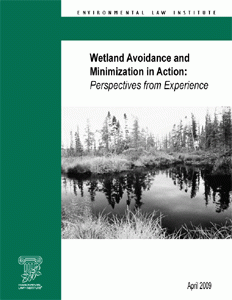National Forum on Synergies Between Water Quality Trading and Wetland Mitigation Banking

The National Forum on Synergies Between Water Quality Trading and Wetland Mitigation Banking report summarizes the discussions from the Forum, held July 11-12, 2005, in Washington DC. The two-day event was designed to bring together experts in wetland mitigation banking with those in the water quality trading community to facilitate a dialogue on stimulating future markets in water quality trading.








